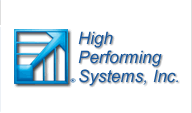by Karen Schwind
The EQ 360 is a multi-rater assessment that provides feedback from multiple perspectives on a person’s Emotional Intelligence (EI*). Our client requires each leader being considered for the High Potential Training Program to take the EQ 360 to have an opportunity to increase EQ self-awareness and create an action plan.
Jack Doe has worked for the organization for five years and manages a team of 3 direct reports. Jack completed the EQ 360 assessment process and had the opportunity to work with a coach from High Performing Systems (HPS) as part of the High Potential Training Program.
Jack’s results indicated that he had several Subscales in the high range: Flexibility, Optimism and Independence. He also had Interpersonal Relationships, Emotional Expression and Emotional Self-Awareness in the low range. In a feedback debrief meeting with Jack, he described himself as able to go with the flow but not one to socialize with colleagues very often.
The ratings from his manager closely correlated with Jack’s: none of the Subscales were significantly different. Jack’s peers, however, rated him lower in Flexibility and Optimism than he rated himself. Jack discovered that his peers saw him as rigid in meetings when new ideas were presented. He gained new insight around the message his lower Emotional Self-Awareness and Emotional Expression scores were sending.
Feedback from his direct reports also provided valuable insight. The team rated Jack higher on Independence than he rated himself, and the team rated him even lower on Interpersonal Relationships than he rated himself. When he asked for additional feedback, the team stated that Jack did not have an open door policy and that he often completed tasks himself instead of assigning them to his team.
After additional meetings with his coach from HPS, Jack implemented an action plan. He began to conduct a weekly staff meeting to keep his team in the loop on projects. With his peers, Jack asked a colleague to sit across from him in meetings and watch how he reacted to new ideas. If Jack began to appear rigid around a new idea, the colleague would subtly move her coffee mug from her right side to her left (and back again if needed) as a cue for Jack to be aware of his expressions and body language while they were occurring.
A month after he began implementation of his action plan, one of Jack’s peers approached the HPS coach to share unsolicited feedback he had noticed about Jack. The peer had recognized that Jack’s body language was more relaxed and comfortable and that he tended to smile more in meetings. Even his direct reports indicated that the weekly meetings were giving them an opportunity not only to feel more connected to work projects but also to get to know Jack better on a personal level.
The EQ 360 is a valuable instrument that provides additional feedback to leaders like Jack about their EI skills. In other cases, the EQ 360 can be used when a leader refuses to listen to feedback and needs to see results in black and white. Either way, the EQ 360 adds information that a leadership coach or HR/OD professional can use to help leaders with a variety of EQ self-awareness or development initiatives.
To learn more about becoming certified to use the EQ-i and EQ 360 with your clients, click here,
For a print out of this article, click here. |
